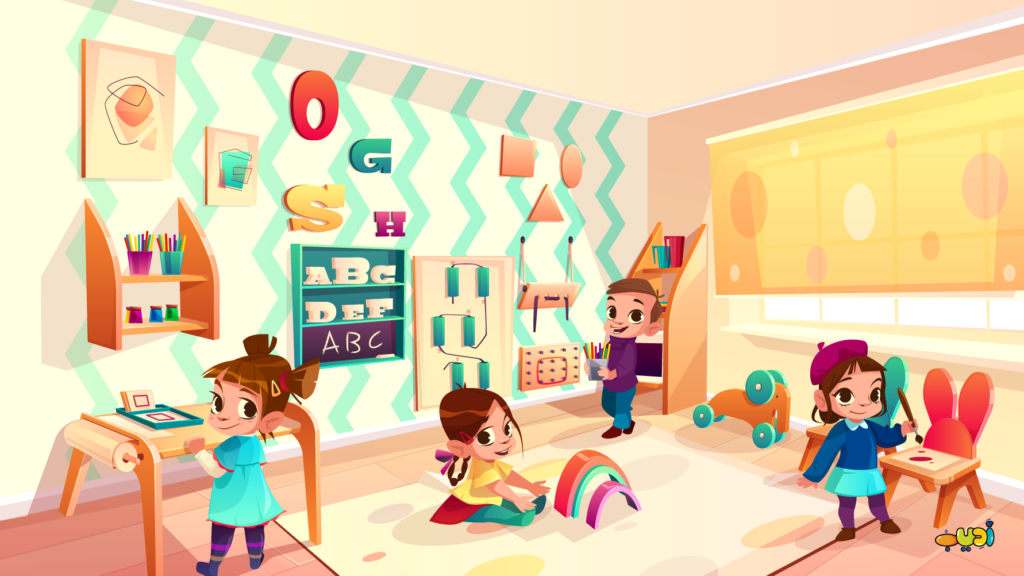Montessori Edu System

Maria Montessori was born in Italy in 1870; she studied medicine in Rome University, and specializes in Children Medicine. She was the first woman to graduate from a med school in Italy. Her background in medicine affects her perspective of identifying the periods of children’s lives, mentally, and developing special activities that help them grow, cognitively.
According to Montessori, children do the same actions repeatedly. The main reason for that is due to an inner urge to be satisfied. This need helps kids build a sense of the world around them. Kids need guidance through it so they become responsible individuals, and feed that need of learning.
There are seven principles that Montessori system relies on:
1- Free choice
Having a sense of control helps children become better learners. The Montessori system draws certain lines regarding the environment, it certainly provides a wider freedom to children compared to traditional systems. Children in the Montessori system get the chance to choose what activities/ subjects to work on, how much time to spend on each activity, their peers to work with, and more. This freedom is a key factor to the fact that children learn better, because they get to do activities they are interested in, and with people they like.
2- Order
Order in the classroom has a major effect on the results of kids’ learning. The Montessori system sets order in two different ways; 1) physically, in which the classroom environment is organized. 2) conceptually, in which the learning materials are organized to meet the progress of children.
3- Interest
Unlike the traditional learning, that is based on tests’ results, the Montessori system is examination free. It relies on the interest of each child, they can choose the activities they like. This approach has been proven, for both adults and kids, to result in longer-term learning. So, the learning becomes more efficient, and lasts longer.
4- Learning from peers
Montessori classrooms include kids from different ages, (3-6) and (6-12), this variety causes a wider range of learning. Meaning, the younger kids learn from the older ones via asking questions, and observing them while working. The older kids get to repeat the gained knowledge through teaching the younger ones. This repetition is healthy as it.

5- Movement
Learning by doing is a based approach in Montessori classrooms. Kids are free to move in open spaces. Also, the activities are based on figuring out how to complete them by doing, not by sitting at desks and being spoon fed theory-based knowledge. Movement is knotted with efficient learning.
6- Context
The context in which the Montessori classrooms is built around actions and objects. Kids in the Montessori system learn by doing, rather than sitting at desks while writing, and reading after a teacher. This system implement life outside the classroom in the activities, and brings the world into the classroom.
7- Teacher guidance
Montessori teachers offer children guidance through their activities, and within the environment. Making sure they have their freedom without crossing any boundaries.
